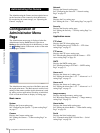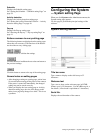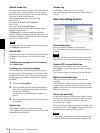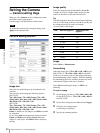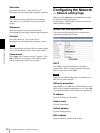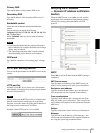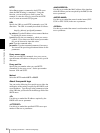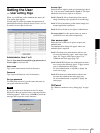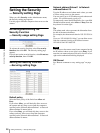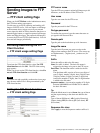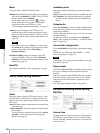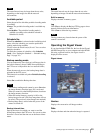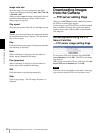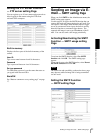
Administrating the Camera
Configuring the Network — Network setting Page
24
HTTP
Select On to output a command to the HTTP server
when the DHCP setting is completed. Using this
function, you can configure a useful system, for
example, to view the access log stored in the HTTP
server or start an external CGI program.
URL
Specify the URL to send HTTP commands, up to 256
characters. The URL is normally described as follows:
http://ip_address[:port]/path?parameter
ip_address: Type the IP address or host name of the host
to which you want to connect.
[:port]: Specify the port number to which you want to
connect. If you want to use Well-known port number
80, you do not need to input this value.
path: Type the command name.
parameter: Type the command parameter if necessary.
You can use the special tags mentioned below for the
parameters.
Proxy server name
When you send HTTP commands via a proxy server,
type the name or IP address of the proxy server, up to 64
characters.
Proxy port No.
Specify the port number when you send HTTP
commands via the proxy server. Set the port number
between 1024 and 65535.
Method
Select the HTTP method GET or POST.
About the special tags
You can use the following five special tags to allow the
notification of the settings acquired by the DHCP, such
as an IP address. Type the tags in the parameter section
of the URL that you describe in the Message field of the
SMTP menu.
<IP>
Use this tag to embed the IP address acquired by the
DHCP in the text or parameter.
<HTTPPORT>
Use this tag to embed the specified HTTP server port
number in the text or parameters.
<MACADDRESS>
Use this tag to embed the MAC address of the interface
which IP address you have acquired by the DHCP, in the
text or parameter.
<MODELNAME>
Use this tag to embed the camera's model name (SNC-
CS3N or SNC-CS3P) in the text or parameter.
<SERIAL>
Use this tag to embed the camera's serial number in the
text or parameter.



